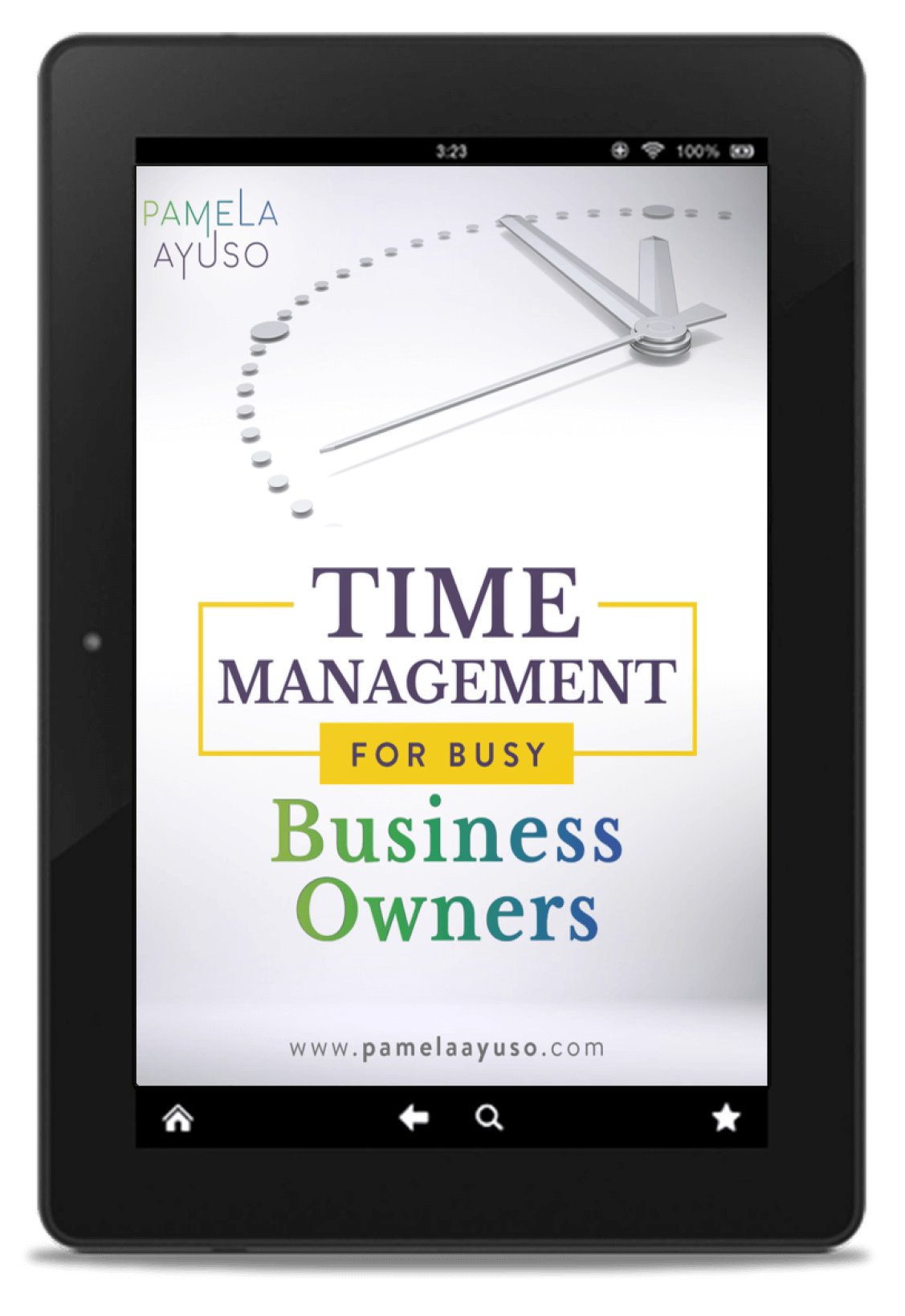Time is our most precious commodity; it cannot be purchased or recovered. We all get the same 24 hours in a day.
Since making more time is not an option, the next best choice is to control the way we use it. However, this is easier said than done. Everything seems to require time. Meetings, clients, employees, new projects, problems, and day-to-day business are incessant. The never-ending demands can easily take up all available time.
![[Photo: Camille Couvez/Unsplash]](https://www.pamelaayuso.com/wp-content/uploads/2021/01/camille-couvez-424606.jpg)
[Photo: Camille Couvez/Unsplash]
Losing Control
Sometimes, non-priorities inflate and demand more time than they should. It seems as though we spend entire days putting out fire after fire. The loudest requests easily get the most attention. Without a clear plan, arbitrary commitments can gradually take more and more of our time. Eventually, we find ourselves not doing the things we need or want to be doing.
Meanwhile, priorities are procrastinated and left for later when they should be the first things done in the day. Other items simply balloon, and because we spend time on them, we are confused into believing we are moving in the right direction.
![[Photo: Loic Djim/Unsplash]](https://www.pamelaayuso.com/wp-content/uploads/2021/01/loic-djim-69263.jpg)
[Photo: Loic Djim/Unsplash]
It Is All About Priorities
All may not be completely lost. You may even be moving in the right overall direction, but are you moving at the fastest possible speed?
The analogy of the rocks and jar illustrates this challenge. If you want to fill up a jar with sand, smaller pebbles, and larger rocks, what is the most efficient way to do it? Take a jar and fill it up with large rocks first. Then, fill up the jar with smaller pebbles, and finally, sand. If you start with the sand instead, it can quickly fill up the entire jar, leaving no space for the smaller or larger rocks. The sand can muddle even the best of intentions.
Our business priorities are the big rocks. They should always be at the beginning of the list. They continuously change, and it is important to stay on top of what they currently are. However, the trends are roughly the same over time: keep income up and costs down, make sure employees and clients are happy, improve operations/products, and launch new projects that support these priorities.
Once the large rocks are taken care of, you can work with the smaller pebbles. These are secondary tasks that are related to main business priorities but represent less crucial demands. Finally, if there is space, you can work with the sand or all those small and disparate tasks that are not priorities. Some of these are distractions and should be discarded.
This metaphor can translate into organizing your to-do list by priority daily. Dedicate 5 minutes in the morning to set up your daily tasks. For each item, question whether it is a priority. If it is not, it should be moved down, no matter how loud or demanding it may be.
![[Photo: Robert Katzki/Unsplash]](https://www.pamelaayuso.com/wp-content/uploads/2021/01/robert-katzki-340194.jpg)
[Photo: Robert Katzki/Unsplash]
The Benefits of Control
It takes practice to identify and block out the sand, but the more it is deprioritized, the easier it becomes to discern what’s worth your time and what isn’t. This creates space which can be carefully used to select your firm’s priorities. With time, this will leave room for further growth.
Clear priorities will help you focus on what truly matters to you and your business. Even though competing demands are inevitable, and will cause noise, your time will be well spent on things which will make the most difference and help you move forward quickly.



